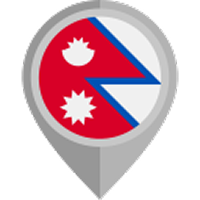Nepal vision | 10/02/2025
Dolpo is an unexplored gem located in the far-away corner of the western Himalayas of Nepal. Travelers barely visit the treasures of natural and cultural heritage. The land of the ancient and preserved culture of Tibetan people living happily lays around the endangered and diverse flora and fauna of Shey Phoksundo National Park, surrounded by the Dhaulagiri-Churen-Putha Hiunchuli Himal to the south and Kanjiroba Himal in the west. Besides, the northeast territory of Mustang and Thak Khola is yet another highlight you might want to explore as your side trip.
After planning for a while, I had the opportunity to visit this preserved cultural and natural Hubspot, to the towering peaks rising above barren, high-altitude plateaus where turquoise lakes reflect the charm of the majestic peak. Alongside the ancient monasteries perched on the cliff, yaks grazing in the pastures, and the glacial rivers and dramatic passes above 5000m, the valleys are so far away from the hustle and bustle that even time seems to move at a slower pace.
Saying this, Is Dolpo truly the hidden land of the Himalayas? was all the thought I had throughout my journey. My long exploration of Lower and Upper Dolpo was mostly trekking, as they were accessible only by a long hike through the rugged terrain. All of that was worth it despite the remoteness—the beauty, the friendly local people, the fun time with them, and traditions untouched by mass tourism.
The list goes on and on, so you may be happy if I took you down the short journey of Dolpo, the land lost in time. So, let’s go right into it.
Overview of Dolpo
My friends in Nepal Vision Trek were kind enough to help me answer all my queries about the hidden valley of Dolpo. My guide Deepak explained It’s a different world,” he had said, eyes gleaming. “No roads, no crowds, just mountains, silence, and the old ways of Tibet.
That was enough to pull me in. In September 2021, I finally made my way to the Dolpo, a remote region that even local Nepalese have never seen it. Tucked away in northwestern Nepal, Dolpo is a land of barren landscapes, ancient monasteries, and local people who have lived there for centuries. The two flights, days of trekking, and a permit process reminded me that the place was something you could stumble into. But once I made my way to the windswept trails, it felt like I had entered a new world of raw and rugged beauty untouched by time.
The Journey to Dolpo
Reaching Dopo was the test of my patience and endurance, with the first flight from Kathmandu to Nepalgunjj was the initial and easiest. As I landed in the humid and chaotic town in the Terai, it was a bit chilly for a while before boarding a tiny plane to Juphal (2475m), the only airstrip in Dolpo.
Then, I started my walking journey as days passed, following the trails winding through deep gorges, picturesque villages of stone houses, and prayer wheels across the rivers led by Himalayan glaciers.
Unlike my past adventures at Everest Base Camp and Annapurna Base Camp, the Dolpo trekking is a bit different from the dramatic desert landscapes with endless skies followed by the scented juniper and dust broken only by the occasional flapping of prayer flags and spinning prayer wheels with the distant yak caravan.

A Region Divided: Lower Dolpo & Upper Dolpo
Dolpo has a lot of secrets wrapped in its arms, and among such are the two appealing beauties of Lower Dolpo and Upper Dolpo—each with its character, challenges, and wonders.
Lower Dolpo: The Gateway to the Hidden World
Lower Dolpo was my introduction to this isolated region. The trails here led me through dense pine forests, narrow gorges, and sweeping alpine meadows. While remote, I felt this part of Dolpo felt more accessible villages were scattered along the route, and the landscape shifted between barren hills and green valleys.
The star of Lower Dolpo was Shey Phoksundo Lake (3611m), a vast and turquoise body of water that seemed unreal. The stillness of the lake in the lap of the sheer cliffs and fluttering prayers just took me to heaven for a while.
Upper Dolpo: A Land Lost in Time
The challenging yet rewarding part of Dolpo trekking is here, the alluring Upper Dolpo, a hidden doorway into a forgotten world. The villages became more isolated, the altitude higher, and the trails more rugged. The best part is that the Tibetan influence was stronger than ever—people dressed in traditional chubas (thick woolen robes) and spun prayer wheels as they walked. The culture here followed the teachings of Bon, an ancient spiritual tradition predating Buddhism, and Tibetan Buddhism itself, both deeply intertwined with the landscape.
One of the defining moments of my journey was reaching Shey Gompa (4200m), an 800-year-old monastery nestled beneath Crystal Mountain, one of the sacred peaks that pilgrims circumambulate in search of spiritual merit. Here, I met a monk who had lived in peace and solitude in the local monastery. The wind weathered his face, his voice barely above a whisper, yet his presence was as vast as the mountains around him.
Dealing and Managing Challenges in Dolpo
The journey to the Dolpo is not an adventure for the faint-hearted. Gladly, I was in the safe hands of my fellow at Nepal Vision Trek the permit to logistics. They helped me with everything. For your better planning, let me share the permit cost and trekking realities of the Dolpo.
Permits
Dolpo has a strict permit system due to its remoteness and proximity to Tibet.
- Lower Dolpo Permit: $20 per day (valid from September to November).
- Upper Dolpo Permit: $500 per week among Nepal’s most expensive trekking regions.
Hiring a local guide is also mandatory for safety and proper navigation in the isolated terrain.
Trekking Realities
The trails climb beyond 5,000m, with multiple high passes that test endurance. The risk of altitude sickness is accurate, so you need the proper acclimatization and slow, steady trekking.
Best Seasons:
- Spring (April–June) – Pleasant temperatures, lush landscapes, and blooming wildflowers.
- Autumn (September–November) – Clear skies, stable weather, and ideal trekking conditions.
- Harsh Winters (December–February): Temperatures can plummet to -20°C, making trekking extremely difficult. Snow-covered passes become impassable, cutting off many villages from the rest of Nepal.
Tourism’s Double-Edged Sword
Rising Footprints
Unlike the bustling Everest region, with 60,000 trekkers annually, Dolpo still sees only about 2,000 visitors annually, but that number is rising by 15% annually as the word spreads.
I remember reaching Shey Phoksundo Lake, expecting undisturbed wilderness. Instead, I found new concrete lodges, disrupting the region’s ageless aura. Solar panels dotted the rooftops, a practical necessity but also a marker of modernization creeping in.
Culture for Sale? In Ringmo village, locals sold chang (barley beer) and yak-wool crafts, a necessary income source but one that blurred the line between authenticity and tourism-driven commodification.
Infrastructure Pressures
The trails I walked weren’t just footpaths; they were arteries connecting isolated villages, but the growing traffic was taking a toll.
- Trail Erosion: Trekkers and mule trains wore down fragile alpine paths. Some areas were littered with plastic wrappers, a reminder that human impact lingers even in the most remote regions.
- Resource Tensions: In Tsharka, I saw locals queuing for water at a communal tap, while nearby lodges stored sizeable plastic water barrels for trekkers. Firewood, once used sparingly, was now a commodity for heating tourist accommodations, raising concerns about deforestation.
Sustainable Futures: Models for Dolpo
NGO-Led Conservation Efforts
Despite these challenges, solutions are emerging.
- Snow Leopard Conservancy: This initiative trains locals to run Himalayan Homestays, ensuring that tourism revenue benefits families directly. Instead of new concrete lodges, trekkers are encouraged to stay in traditional homes.
- Potential ACAP Model: The Annapurna Conservation Area Project (ACAP) successfully manages waste and trail maintenance in Annapurna. Could Dolpo adopt a similar structured conservation framework?
Community-Driven Solutions
Many people in Dolpo are resisting unchecked tourism expansion.
- Reallocating Permit Fees: Dolpo’s Upper Region permit costs $500/week, yet only 30% of this revenue reaches local communities. There’s a growing demand for a fairer distribution to fund schools, clinics, and sustainable infrastructure.
- Cultural Safeguards: In Tsharka, I met a group of elders who had designated sacred areas as "no-selfie zones," ensuring that monastic rituals remained private, rather than tourist spectacles.
To wrap up, Dolpo remains one of Nepal’s last hidden gems, but it is no longer as untouched as it once was. Its remoteness, high permit costs, and lack of infrastructure have shielded it from mass tourism, yet change is coming with more trekkers, lodges, and modern influences. While it is not overrun like Everest or Annapurna, the increasing footfall and infrastructure development hint at an uncertain future.
Experience the raw beauty of Dolpo with expertly guided journeys from Nepal Vision Treks before it transforms. Organize your trek with Nepal Vision Treks and discover Dolpo, one of Nepal’s last true frontiers.
FAQS









